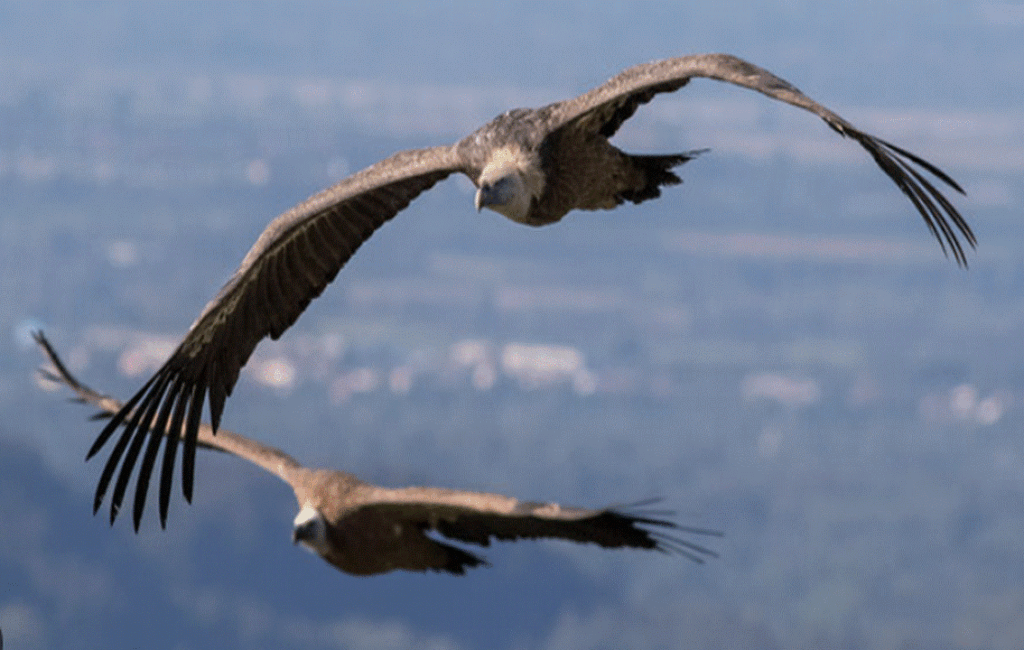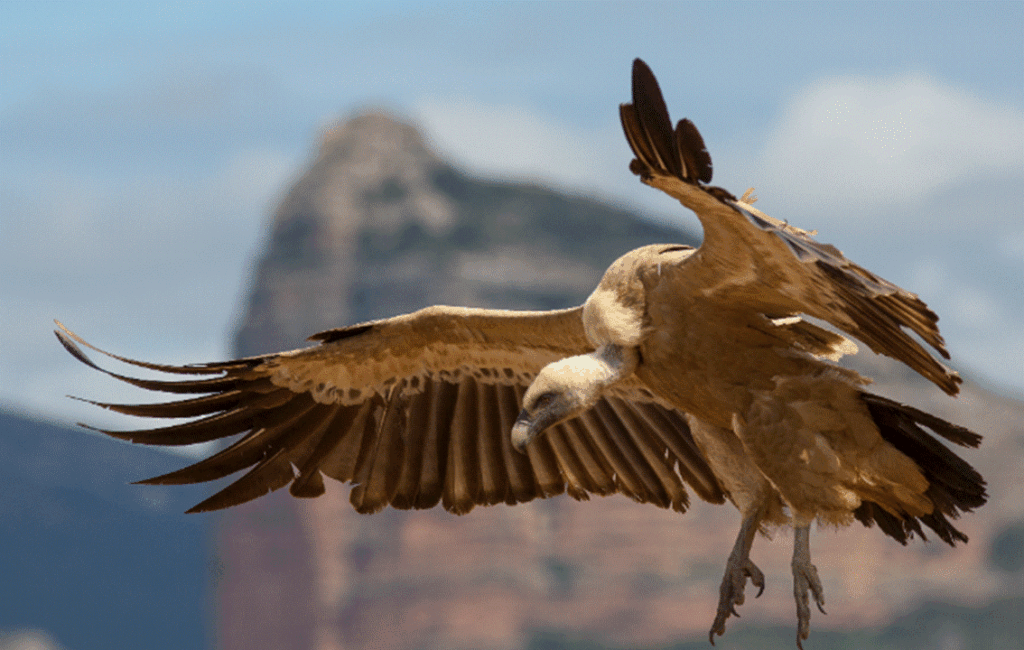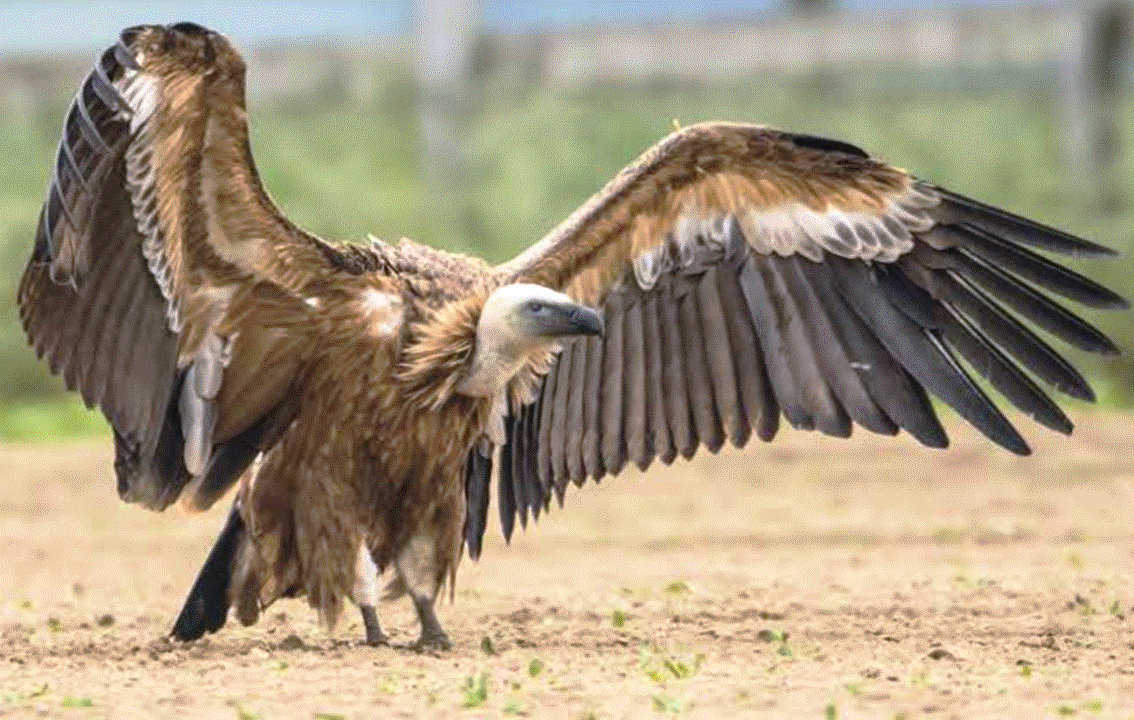THE CYPRUS GRIFFON VULTURE


A RESIDENT SPECIES
Griffon vultures are a resident species of Cyprus. Their population however, has dwindled to dangerously low numbers over recent years. Several studies have confirmed that the bird’s extinction on the island is imminent if no further action is taken. This means that the majestic aviator could disappear from Cyprus skies altogether within the near future.
A RESTOCKING CONSERVATION PROGRAM
The response to the threat of dwindling Griffon Vulture numbers on the island has been spearheaded by the ‘Life with Vultures’ restocking conservation program. This program has seen Griffon Vultures imported to the island directly from Spain. These birds, on arrival, are fitted with trackers before being released into the wild. Since its introduction, a total of 44 vultures have been added to Cypriot stock.
TRACKING VULTURES
This program, whilst facing numerous difficulties, has generally been successful and it has successfully replenished Griffon Vulture numbers in the wild. Ongoing data received from tracking devices has highlighted however, the multiple dangers faced by vultures on the island. This data has revealed that some of these birds have met with tragedy. A total of 11 vultures have been lost since 2022. Just over half have succumbed to electrocution and unintentional poisoning. Others have simply been unable to settle in a new environment.
NEW MEASURES
Data has also shown that electrocutions have occurred mainly in areas heavily frequented by vultures. Bird conservationist groups are now underscoring the urgent need to insulate or redesign power lines in these critical zones, to prevent further losses. In response, the Electricity Authority of Cyprus (EAC) has insulated electric poles in Kelokedara, following three earlier electrocution incidents and is currently looking at ways to expand this to other areas. Installing insulation on power poles or replacing them with bird-safe designs are straightforward steps that have been implemented in several other European countries and beyond. This has enabling power networks to coexist with wildlife.
A STARK REALITY
The Griffon Vulture in Cyprus is under significant pressure. Habitat loss, food scarcity, and poisoning are now major factors that are effecting this bird of prey’s survival on the island. This, along with the fact that some vultures have been unable to integrate properly into their new habitat, does not make good reading. Electrocution adds yet another layer of danger for these birds. Without immediate and proper intervention, the population of these birds faces further decline threatening the species survival on the island..
A NEW GENERATION
Some officials monitoring the birds however, remain optimistic. They have stated that there is hope that some of the vultures will naturally replenish their numbers on the island. Griffon Vultures usually breed at the beginning of January and females lay a single egg each time.
MONITORING BIRD PATTERNS
The data provided by the trackers also helps to monitor the vulture’s movements. This allows officials to understand the bird’s natural behaviour, migration patterns and foraging range. Feeding and watering patterns are also tracked allowing officials to gage how the birds are responding to an ever-changing environment.
A SCAVENGER BIRD
Griffon Vultures are generally responsible for cleaning up the countryside. They promote the nutrient cycle and this plays an important role in maintaining a healthy eco-system. The obligatory scavenger bird contributes to a healthy environment by feeding on the decaying flesh of other animals. This generally helps stop the spread of disease, creating a good balance with nature.
ACTIVE ALL YEAR AROUND
Griffon Vultures prefer a habitat that includes coastal cliffs, mountains, farmland, scrubs and bushes. This impressive bird of prey is active all year round. Their natural habitat on the island includes the Episkopi and the Chanoutaris Cliffs as well as the Diarizos and Xeros Valleys. Whilst they do not like flying over large bodies of water, they are able to glide with their wings on ‘idle’, covering huge distances.
A MAJESTIC BIRD WITH A LARGE WINGSPAN
Ensuring the long-term survival of this majestic bird has become a priority. Their large wingspan allows them to stay aloft for hours and this often creates a magnificent scene when witnessed. Their wingspan usually measures between 2.3 and 2.7 metres, aiding their impressive soaring ability. This bird of prey also uses thermal currents to fly in slow motion in typical vulture circles. Protecting them for some of the people that have witnesses this sight, is not just a matter of conservation, but has become a critical part of the island’s natural heritage.


THE PROCESS FOR NEW GRIFFON VULTURE ARRIVALS
The program to restore Griffon Vulture numbers to Cyprus first began in 2012, when there were under 10 of these majestic birds left living in the wild on the island. The program, which has called for drastic measures, has seen a gradual increase in the bird’s numbers, and today Cyprus has up to 37 Griffon Vultures living in the wild. Whilst numbers have slowly increased, however, the success rate of the program as a whole has remained challenging, missing several targets.
The Cyprus Griffon Vulture project as a whole advocates for the relocation of Griffon Vultures from Spain to Cyprus. It is a collaboration between BirdLife, the Cypriot Game Service, and the Vulture Conservation Foundation and the combined efforts of all three has proven to be vital for the survival of these birds on the island. Although way off the target figure of 200, which is considered the minimum viable population for these birds in Cyprus, it is hoped that there are now sufficient birds in the wild that will begin to breed, further boosting their numbers naturally.
Although there are several reasons for the bird’s low population, the main point of contention surrounds the import process. This is not straightforward; each new arrival needs at least six months to acclimate to its new surroundings. Upon arrival, the Cypriot Game Service transfers each griffon vulture to a special acclimatisation centre in Limassol. When these birds are ready for release, they are equipped with satellite transmitters that track their progress. Once released, unintentional poisoning, as well as other threats, such as electrocution, remain the main threats to the bird’s survival in the wild.
Spain is home to Europe’s largest Griffon Vulture population, currently numbering around 30,000 pairs. With conservation in mind, the autonomous region of Andalusia, as well as a zoo in Seville, has donated several Griffon Vultures to Cyprus as part of the ongoing program. The selection process for the birds is supervised by the Vulture Conservation Foundation, which contributes expertise and coordination for the transfer process from Spain to Cyprus.


